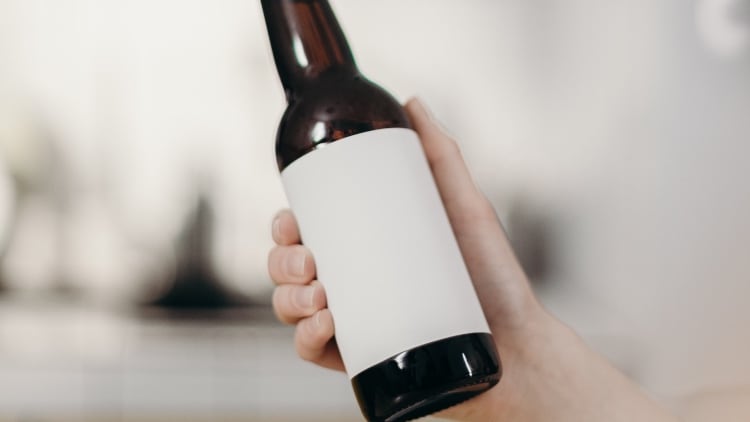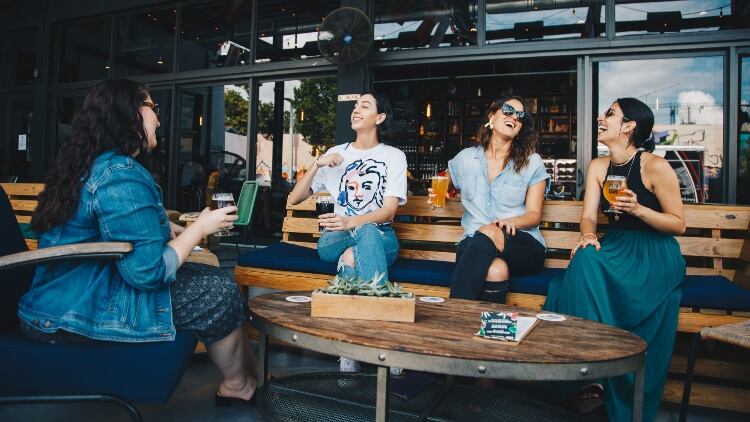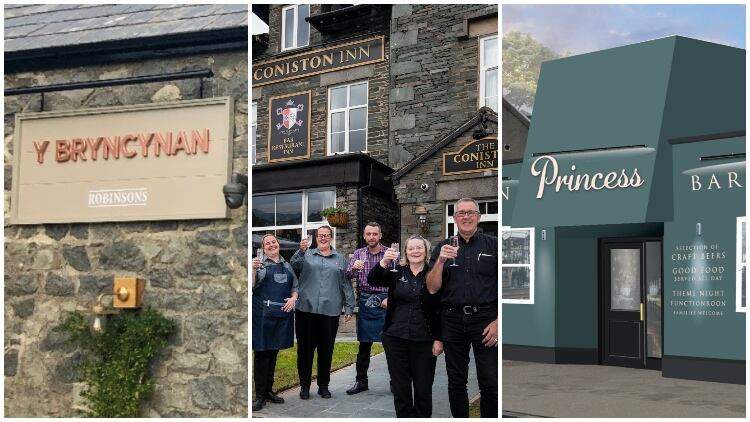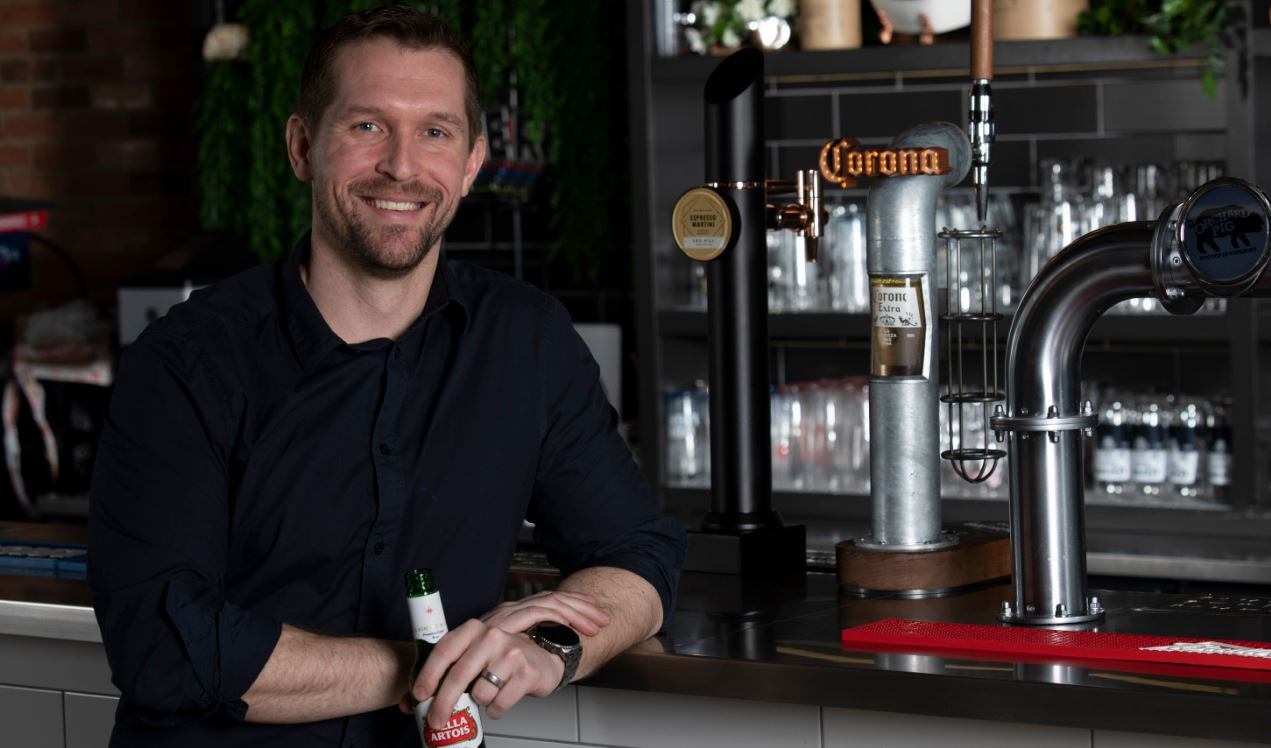‘Someone mistook sanitiser for a condiment’

Around three-quarters (74%) of pub, bar and restaurant operators say that non-compliance with Covid-secure measures and customer expectations of a complete return to normal are their biggest post lockdown fears according to a study by Stampapp.me.
Spare masks used as 'phone hammocks'
Contactless pub, bar and restaurant service provider Stampapp.me asked hospitality operators to identify behavioural changes they’d noticed as Covid-19 restrictions had eased, with responses including:
- “Someone mistook sanitiser for a condiment in my café.”
- “People who order open chips often find that the mask gets between their first chip and their mouth.”
- “We’ve asked our bouncer to wear colourful, looser-fitting clothes and we’re getting him a ‘welcomer’ badge.”
- “A bit of light-hearted confusion about the new ordering and paying process.”
- “Bigger tips, which has been brilliant, and real appreciation for what we’re offering.”
- “More talk between tables. The restaurant feels like an even more social place.”
- “A bit more ‘air traffic control’ around the bathrooms, but all in good humour.”
- “A few teething problems with the one-way system. We’ve put in the odd ‘slip road’ to fix it.”
- “Mask wearers at the same table chatting by text.”
- “Spare masks used as phone hammocks while charging.”
The contactless services provider found that pub, bar and restaurant owners were concerned about striking the right balance between opening for business and tightening up on processes to reduce risks of infection in a poll of more than 1,000 venues.
One pub owner said that she was concerned that patrons might revert to the “World War Z scale-the-walls drinks ordering system” as people reacclimatise to an evening at the pub.
However, while operators shared anecdotes of customers mistaking sanitiser for condiment, mask wearers at the same table chatting by text, and having to introduce “slip roads” in one-way systems, the majority (63%) said that they had been pleased with customer reactions to new processes.
“We’re all heartily fed up with the phrase, ‘the new normal’, but we should really be worried about the new ‘ignormal’, habitual customers who find it difficult to comply with important new safety measures,” Tom Messett, founder of Stampapp.me, said.
“There are simple ways of being safe and there are plenty of benefits for guests, including better, faster service and less time spent queueing.”
The rise of ‘ABVarious’ drinkers
Despite a glut of Brtish drinkers increasing their alcohol intake behind closed doors during lockdown, a new study from alcohol-free beer brand Freestar has revealed that one-in-five now reflect on their alcohol consumption, and reducing it, on a daily basis.
As previously reported by The Morning Advertiser, research by global intelligence platform Streetbees found that Brits increased their drinking more than any other country since the start of the pandemic with 68% drinking more and only 24% drinking less.
However, following what’s been dubbed the ‘lockdown lock-in’ – where almost a third of Brits were drinking alcohol between four and seven days a week – more than a quarter (26%) of the UK now want to drink less according to Freestar with roughly a third (37%) of millennials actively wanting to reduce their alcohol intake following the pandemic.
UK cities which drank the most during lockdown
- London (drank alcohol 2.54 days per week on average)
- Belfast (2.48 days per week on average)
- Birmingham (2.43 days per week on average)
- Manchester (2.37 days per week on average)
- Cardiff (2.36 days per week on average)
- Plymouth and Bristol (2.26 days per week on average)
- Sheffield (2.23 days per week on average)
- Leeds and Norwich (2.17 days per week on average)
Streetbees also found that Gen Z drinkers are the most likely to have cut down – with 51% drinking less and 32% drinking more since the start of the pandemic.
With half of Brits (50%) feeling that there is less pressure to drink alcohol following the 105 day enforced on-trade closure, two-in-five identify as being “ABVarious” or having a flexible appetite for consuming both alcohol and alcohol-free drinks.
However, there is still a negative stigma attached to going sober according to Freestar, with a third (29%) of the UK saying they feel more comfortable drinking alcohol-free options in their own home, compared to a bar or restaurant.
“When we set out to create Freestar our aim was to make people feel confident and proud to choose an alcohol-free option, whether an alcohol drinker or not,” Charlie Crawley, co-founder of Freestar said.
“Our research shows that following Covid-19 more people are re-thinking the amount of alcohol they consume weekly and are wanting to balance this out with non-alcoholic options that still feel right for social situations or moments to celebrate.

Diners diffident, but independents proving popular
A survey of more than 2,000 people by online training provider High Speed Training has found that more than three quarters (78%) of Brits are yet to enjoy a meal out at a pub, bar or restaurants since the easing of lockdown restrictions on 4 July.
However, of those that have dined out thus far, more than two thirds (68%) chose to visit an independent restaurant over a chain (32%).
“While early numbers of those returning to eat out is small, it is reassuring to see that small independents have the public’s support,” Dr Richard Anderson, head of learning and development at High Speed Training, said.
“The Eat Out to Help Out scheme is a fantastic way to ensure our treasured hospitality industry thrives once more.
“From independents to large chains, discounted prices to entice the public back to their favourite establishment in August will mean hospitality workers’ livelihoods are protected and people are encouraged to go out for a meal again.”




